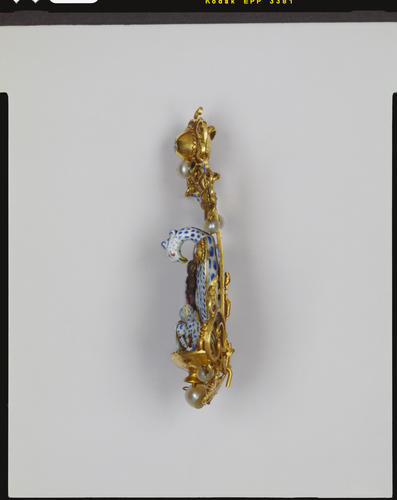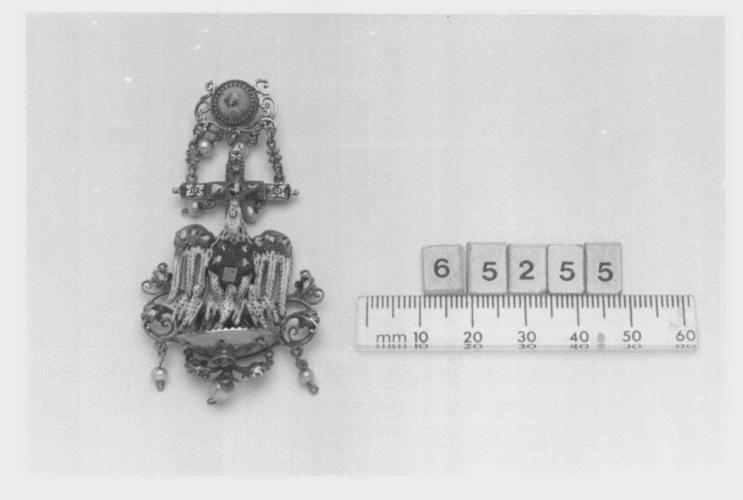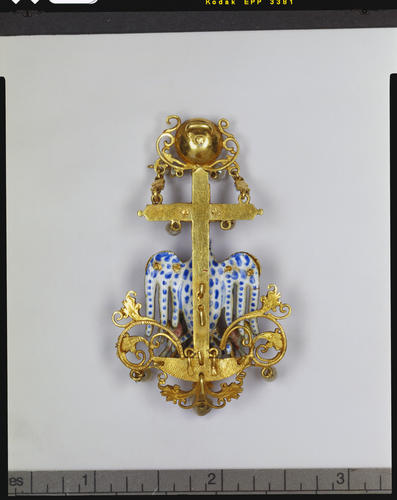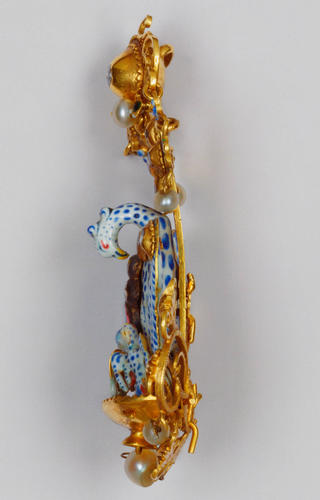Pelican in her piety pendant jewel late 17th c.-early 18th c.
Gold, émail en ronde bosse, rose-cut diamonds, Burmese rubies, saltwater pearls and a baroque pearl | 6.9 x 3.7 x 1.3 cm (whole object) | RCIN 65255







-
Enamelled gold pendant representing a pelican piercing her breast to feed her three young hatchlings. The pelican sits on a round base surrounded by open scrollwork and diamond-set foliage. Three pearl pendants are suspended from the scrollwork. The bird and her young are of white enamel with blue markings; her wings are set with diamonds and her breast is set with a ruby and diamonds; red enamel on the central hatchling indicates drops of blood. The pelican group is set against a diamond-studded cross with foliage inlaid in black enamel on the ends and two pearl pendants. The top of the pendant consists of a conical-shaped setting with a central diamond surrounded by a scrollwork frame from which the cross and pelican and two pearls are suspended.
The jewel has been described as probably Spanish or Portuguese work of the 17th century. The ‘platform’ on which the pelican and her young rest is an element frequently found in Spanish jewels of c.1600 and later. The floral-type settings and the style of enamelling, however, are typical of late 17th and early 18th century Spanish jewellery.
The pelican piercing her breast to feed her young with her blood symbolises the sacrifice of Christ on the cross. It was also the attribute of Charity, referring to the love of God and the love of one’s neighbour.
Text adapted from Ancient and Modern Gems and Jewels in the Collection of Her Majesty The Queen, London, 2008Provenance
First recorded in the Royal Collection in 1872.
-
Medium and techniques
Gold, émail en ronde bosse, rose-cut diamonds, Burmese rubies, saltwater pearls and a baroque pearl
Measurements
6.9 x 3.7 x 1.3 cm (whole object)
Category
Object type(s)







